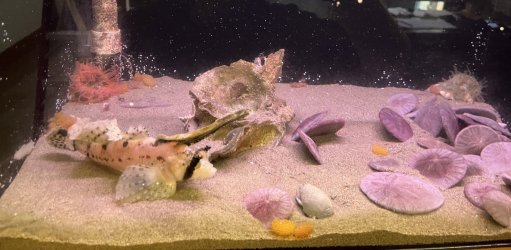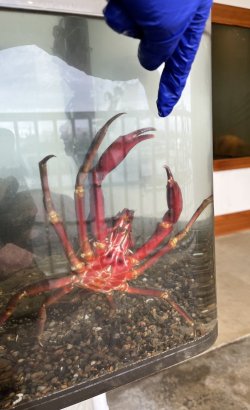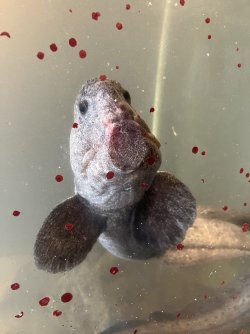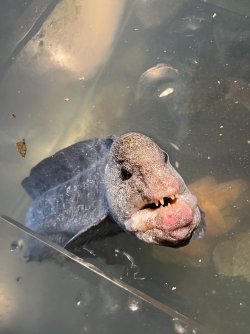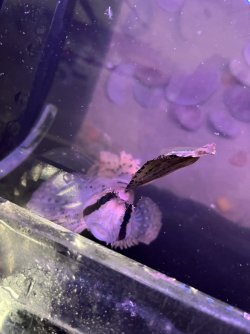Seisage
Fish Crazy
I volunteer at a local public aquarium that exclusively keeps species native to the Pacific Northwest (USA). I've been volunteering for a few years now and really enjoy the work. I always end up with a lot of pictures of the animals, so even though these aren't my personal tanks, I figured I'd start a journal to document the fun little moments I run into while feeding, cleaning tanks, and otherwise caring for these critters. I'll try to update this once a week, so consider subscribing to this little "newsletter" if you'd like to see more haha.
To kick this off, we've got:
Spawning sailfin sculpins! These are one of my favorite sculpins ever. They're extremely charismatic, although very picky. They only thing they eat consistently is live shrimp. The female's hiding behind that clump of barnacle shells, but the male's out and about. They do care for their eggs, which are the little orange clumps on the sand. This is a somewhat older picture, so by now the eggs have eye spots and are getting closer to hatching. We won't collect and rear the fry because we don't really have extra tanks to do so, and we don't have anywhere to give the fry to. Once hatched, they'll all be sucked into the outflow and end up in the ocean.
A very peeved kelp crab. I love these little guys. They're so full of personality, and that personality is usually "anger". I admit, I do love to tease them.
And lastly, one of our wolf eels. We have two, although our larger one is fairly sedentary at the moment. They seem to go through periods of inactivity where they won't eat at all, and then have short bursts of energy where they're suddenly ravenous. These cycles happen on the order of weeks to months. This boy is currently our active one and he'll come straight up to the surface and stick his face out of the water when he sees you climbing the ladder to feed the tank. He does have a little sore on his lower lip, but there's not a ton we can do about it, unfortunately. The vet we consult with has said he's never seen a wolf eel in captivity that doesn't have a bit of wear and tear from rubbing on the glass or other tank features.
To kick this off, we've got:
Spawning sailfin sculpins! These are one of my favorite sculpins ever. They're extremely charismatic, although very picky. They only thing they eat consistently is live shrimp. The female's hiding behind that clump of barnacle shells, but the male's out and about. They do care for their eggs, which are the little orange clumps on the sand. This is a somewhat older picture, so by now the eggs have eye spots and are getting closer to hatching. We won't collect and rear the fry because we don't really have extra tanks to do so, and we don't have anywhere to give the fry to. Once hatched, they'll all be sucked into the outflow and end up in the ocean.
A very peeved kelp crab. I love these little guys. They're so full of personality, and that personality is usually "anger". I admit, I do love to tease them.
And lastly, one of our wolf eels. We have two, although our larger one is fairly sedentary at the moment. They seem to go through periods of inactivity where they won't eat at all, and then have short bursts of energy where they're suddenly ravenous. These cycles happen on the order of weeks to months. This boy is currently our active one and he'll come straight up to the surface and stick his face out of the water when he sees you climbing the ladder to feed the tank. He does have a little sore on his lower lip, but there's not a ton we can do about it, unfortunately. The vet we consult with has said he's never seen a wolf eel in captivity that doesn't have a bit of wear and tear from rubbing on the glass or other tank features.


